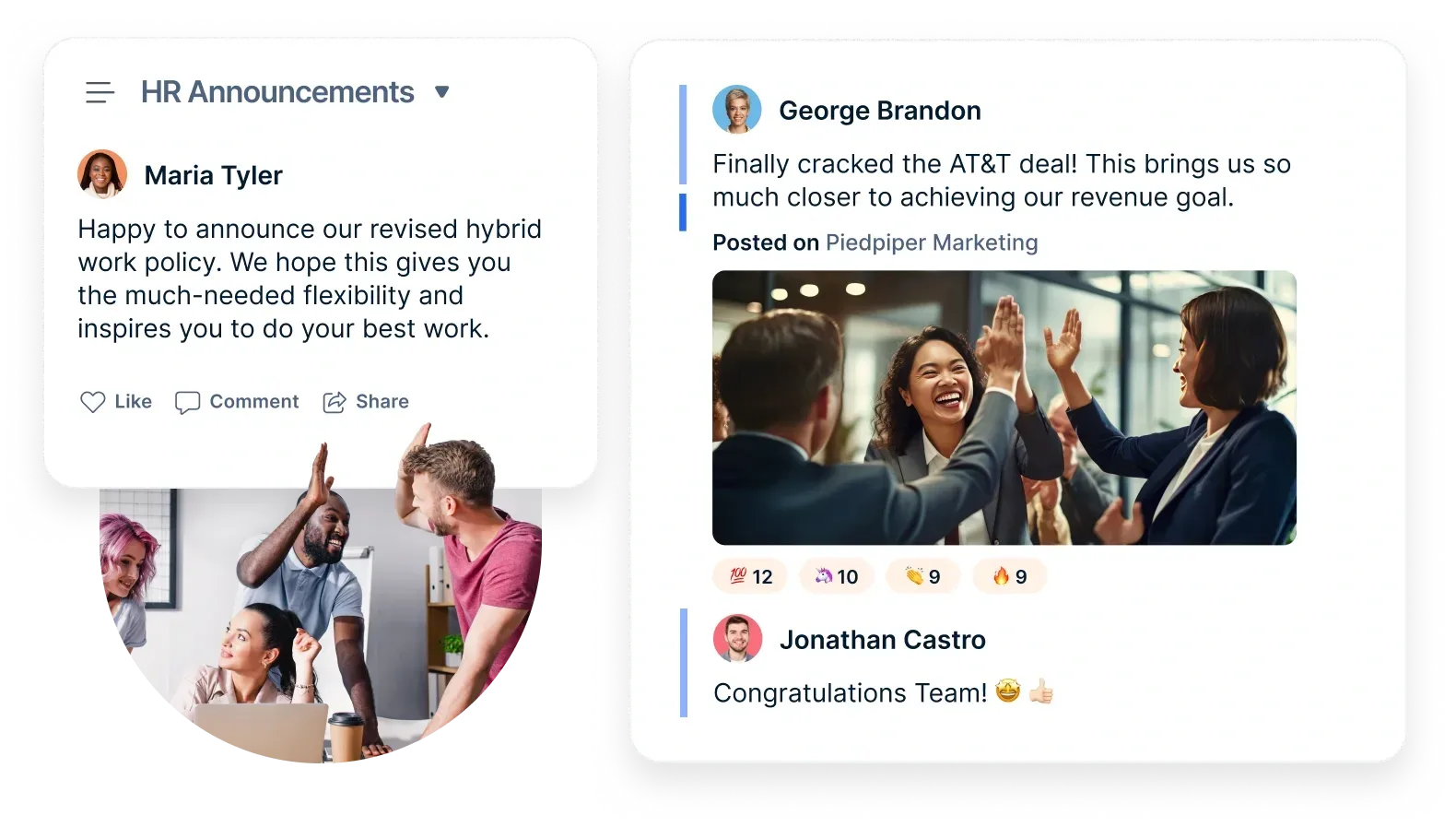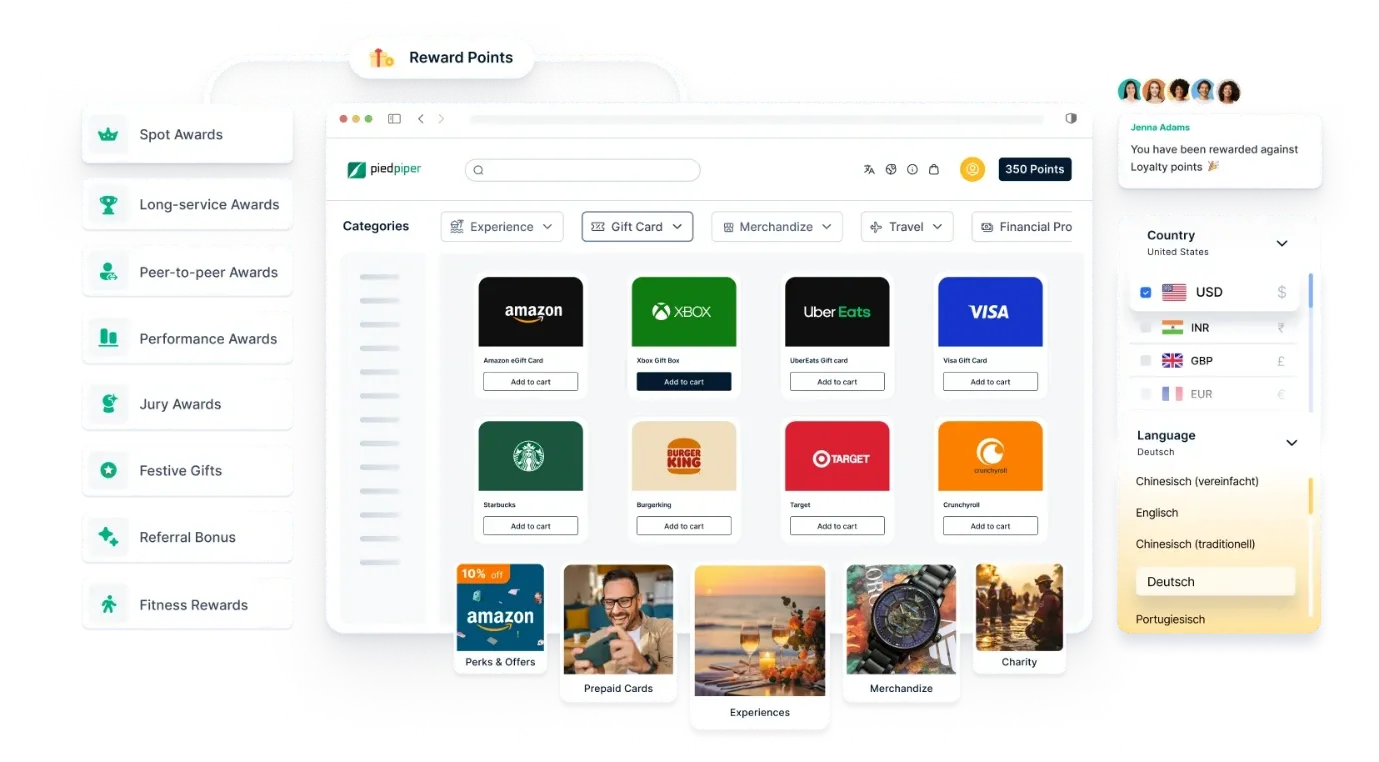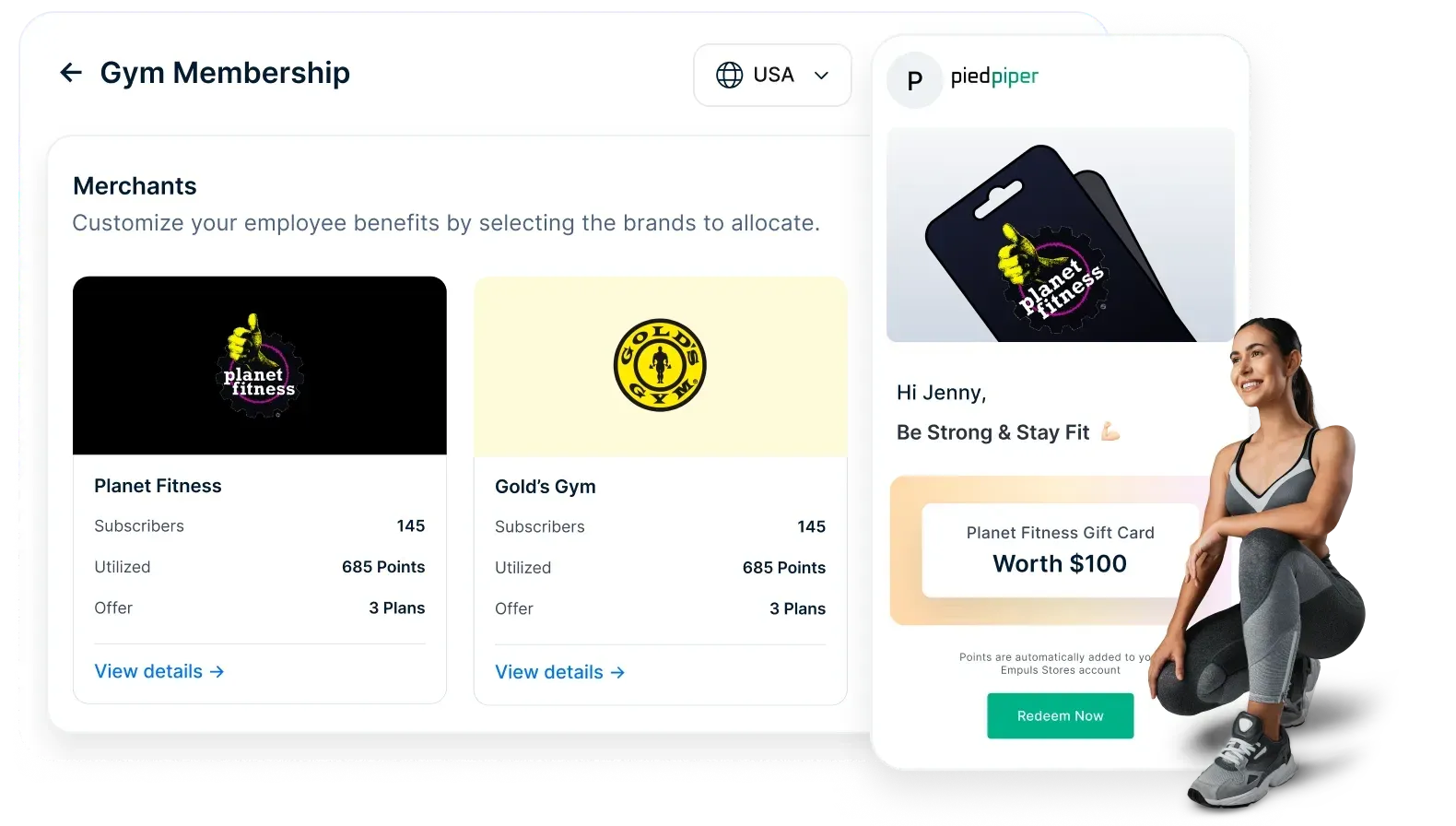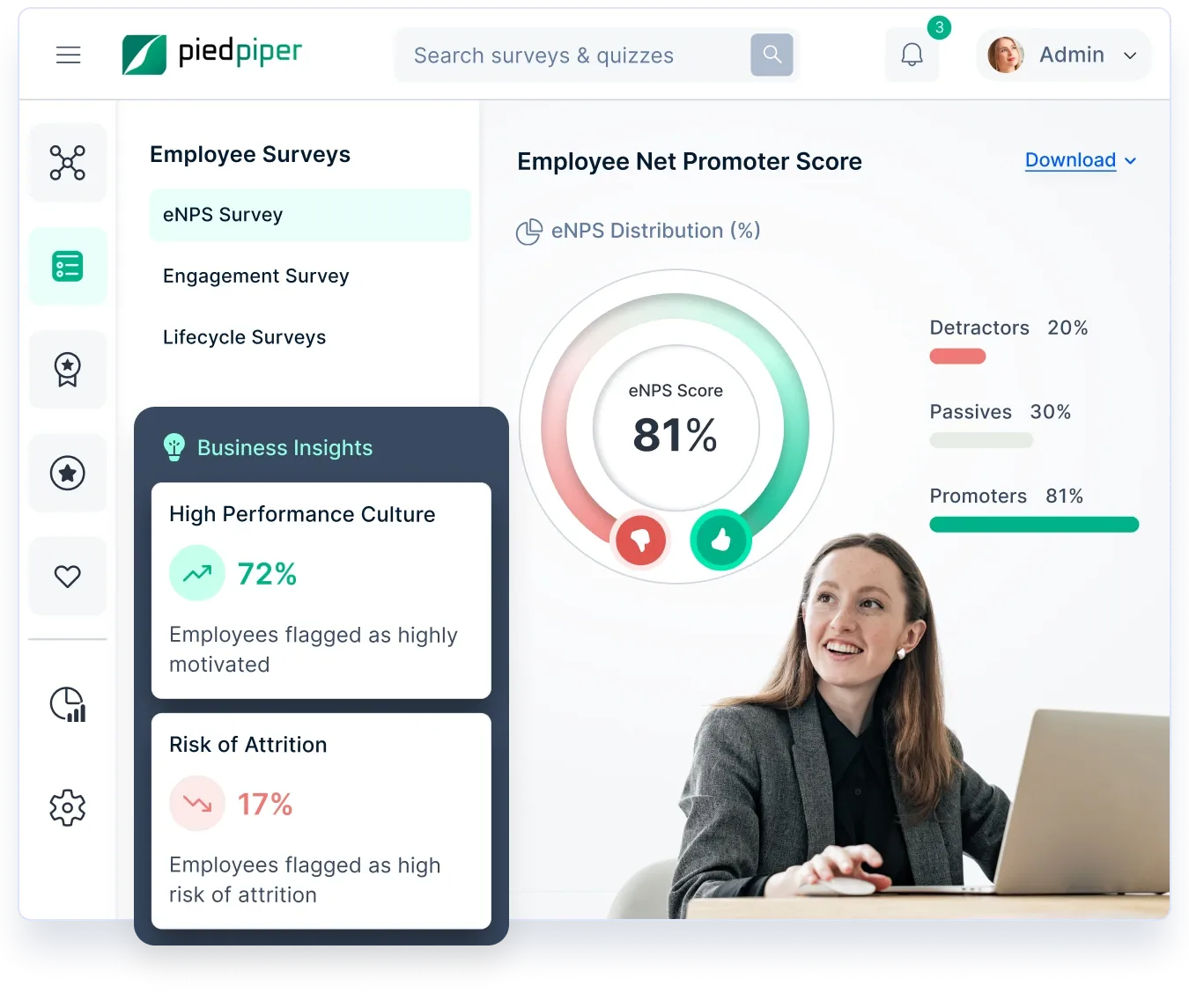How to Build a Culture of Sustainability in the Workplace: Ideas, Tools & Strategies
Explore how to build a culture of sustainability in the workplace through actionable strategies, digital tools like Empuls, and employee-driven initiatives that make a lasting impact.
On this page
- Why sustainability in the workplace matters
- Characteristics of a sustainable workplace
- Promoting sustainability in the workplace
- How Empuls bring sustainability initiatives to life
- Workforce sustainability – empowering people for the long haul
- 10 Quick sustainability in the workplace ideas
- Conclusion: build a future-ready, sustainable workplace
Sustainability in the workplace is no longer a buzzword—it’s a vital component of future-ready organizations. As businesses increasingly recognize their role in combating climate change and fostering inclusive growth, sustainability at work has become both a responsibility and a strategic advantage.
So, what is workplace sustainability? It refers to an organization’s ongoing commitment to minimizing its environmental footprint, supporting employee well-being, and creating ethical, equitable, and efficient practices across operations.
A sustainable workplace isn't just about going paperless or recycling—it's about designing a work environment that thrives on conscious choices, resilience, and long-term value creation.
From reducing carbon emissions to nurturing employee engagement and promoting wellness, workplace sustainability spans across environmental, social, and governance (ESG) pillars. And when embedded into everyday practices, it can significantly boost morale, productivity, and profitability.
In this blog, we’ll explore how businesses can promote sustainability in the workplace, implement meaningful initiatives, and generate lasting impact for their people and the planet.
Why sustainability in the workplace matters
Sustainability in the workplace goes far beyond eco-friendly policies—it’s about creating a balanced ecosystem where employees, organizations, and the environment can thrive together. As more companies aim for long-term resilience, workplace sustainability has emerged as a key driver of both social responsibility and operational excellence.
1. Environmental impact
One of the clearest benefits of a sustainable workplace is the reduction in environmental footprint. Small initiatives—like reducing single-use plastics, conserving energy, or enabling remote work—collectively result in significant positive change. These actions contribute to lowering carbon emissions and resource consumption, which is vital in addressing global climate challenges.
2. Employee well-being and satisfaction
Sustainability at work also translates to supporting employees’ physical, emotional, and financial health. Programs like wellness benefits, flexible working, inclusive recognition, and fringe perks foster a sustainable work environment where people feel supported and valued. In fact, Empuls data shows that 90% of employees feel more valued and recognized when such programs are in place.
3. Brand Image and talent retention
Today’s workforce—especially Gen Z and Millennials—wants to work for companies that align with their values. Promoting sustainability in the workplace signals to employees, candidates, and customers that your business is ethically and socially responsible. This can boost your reputation and significantly improve talent attraction and retention.
4. Profitability and innovation
A commitment to sustainability doesn’t just feel good—it pays off. Sustainable businesses often report higher customer satisfaction, innovation, and even revenue growth. According to Empuls, companies implementing engagement-driven programs see 1.5x growth in revenue and 30% higher customer satisfaction.
Characteristics of a sustainable workplace
Creating a sustainable workplace means going beyond surface-level eco-initiatives. It requires building a foundation rooted in responsible practices, people-centric policies, and ongoing innovation. Whether you're a startup or an enterprise, certain common traits define sustainability at work.
1. Energy-efficient infrastructure
Sustainable workplaces prioritize reducing energy consumption by using LED lighting, smart sensors, green-certified appliances, and optimized HVAC systems. Some even integrate renewable energy sources like solar panels to power their office spaces.
2. Waste reduction and responsible consumption
From setting up recycling stations to going paperless, minimizing waste is a key component of sustainable workplace practices. Digitizing workflows, reusing office supplies, and sourcing materials locally also help reduce the environmental footprint.
3. Inclusive culture and people-first policies
Workforce sustainability in the workplace includes creating an inclusive and equitable environment for all employees. This means offering equal growth opportunities, supporting diverse hiring, and encouraging open communication. Platforms like Empuls foster inclusivity through transparent communication tools like social intranets and community forums.
4. Well-being-focused benefits
Supporting holistic employee wellness is another hallmark of sustainability. Empuls, for example, offers flexible fringe benefits like remote work allowances, fitness stipends, and upskilling support—all tied to a Lifestyle Spending Account (LSA). These programs empower employees to personalize their well-being journey, building a more resilient workforce.
5. Digital and remote-friendly tools
Modern sustainable workplaces embrace hybrid and remote work models. This reduces daily commute-related emissions and enables flexible lifestyles. Tools that integrate communication, recognition, and surveys in a single platform—like Empuls—enable digital-first engagement with minimal overhead.
These characteristics not only support sustainability initiatives in the workplace but also enhance employee experience and operational efficiency.
Promoting sustainability in the workplace
Building a sustainable workplace isn’t just about ticking off a checklist—it’s about fostering a culture where sustainability becomes second nature. Whether you're introducing new policies or enhancing existing ones, the key lies in proactive communication, leadership buy-in, and empowering employees at every level.
1. Lead by example
Leadership must walk the talk. When senior management actively supports sustainability at work—be it through eco-conscious office design, policy shifts, or ethical sourcing—it inspires employees to adopt the same mindset. Aligning company goals with environmental and social impact creates a shared sense of purpose.
2. Leverage technology to drive behavior
Using digital platforms like Empuls can be a game-changer in promoting sustainability. Empuls supports sustainable workplace practices by:
- Enabling digital celebrations (birthdays, milestones, anniversaries) to cut down on physical gifts and paper waste.
- Centralizing communications via a paperless social intranet, reducing dependency on printed memos and flyers.
- Creating digital reward systems through a virtual catalog of eco-friendly options, gift cards, experiences, and charity donations.
3. Engage employees with gamified campaigns
Set up friendly challenges like:
- “Green Commuter of the Week”
- “Zero-Waste Lunch Challenge”
- “Remote Work Energy Saver”
Use Empuls' recognition module to automate rewards, shout-outs, and leaderboards for maximum participation.
4. Create green champions or task forces
Empower passionate employees to lead green committees or sustainability drives. These teams can initiate projects like community tree planting, upcycling workshops, and awareness campaigns internally.
5. Host green education & wellness sessions
Promote sustainability at work by organizing expert webinars or lunch-and-learns focused on:
- Conscious consumption
- Sustainable finance
- Digital well-being and minimalism
With Empuls' events module and community groups, you can broadcast, organize, and track engagement seamlessly.
6. Celebrate & communicate achievements
Celebrate every eco-conscious achievement. Empuls enables organizations to:
- Broadcast updates via internal posts and polls.
- Share stories using rich media (GIFs, videos, infographics).
- Highlight top contributors in a company-wide recognition feed.
7. Track and share impact transparently
Use built-in analytics and reports in Empuls to measure the impact of your sustainability campaigns—from employee participation rates to recognition trends—and share outcomes transparently with your teams.
How Empuls bring sustainability initiatives to life
Bringing sustainability to life in the workplace means turning values into consistent actions. Below are powerful, real-world sustainability initiatives that organizations can implement—with insights into why they matter and how platforms like Empuls help bring them to life.
1. Digital-first engagement
Paper-based communication, printed newsletters, and static bulletin boards create physical clutter and increase an organization's carbon footprint. Embracing digital tools reduces paper waste, lowers printing costs, and conserves energy used in traditional communication methods. Additionally, it supports remote and hybrid teams in staying informed without needing physical presence.
Empuls replaces paper with a dynamic social intranet that enables real-time sharing of updates, milestones, and internal news through rich media formats like posts, GIFs, videos, and polls.

2. Remote work enablement
Commuting is one of the biggest contributors to workplace-related carbon emissions. By allowing employees to work from home, organizations reduce vehicular pollution, ease the pressure on urban infrastructure, and support a better work-life balance. It also allows companies to downsize office energy usage and rethink space efficiency.
Through its flexible fringe benefits program, Empuls supports remote and hybrid models by offering virtual celebrations, recognition tools, and remote work allowances. It keeps distributed teams connected, engaged, and aligned while lowering environmental impact.

3. Green gifting and rewards
Traditional corporate gifts often involve plastic packaging, excessive inventory, and unused generic items—resulting in wasted resources and added landfill. Moving to digital and experiential gifting promotes mindful consumption and aligns with eco-friendly values.
Empuls offers a digital-first rewards catalog with options like e-gift cards, donation-based rewards, online subscriptions, and wellness experiences. Companies can avoid unnecessary shipping and storage while providing meaningful, customizable options that employees value.

4. Financial wellness and sustainable spending
True sustainability includes economic resilience. Helping employees save money on daily essentials reduces financial stress and encourages smarter, more sustainable lifestyle choices. Supporting financial well-being contributes to long-term workforce stability and morale.
With Empuls’ Perks & Discounts Store, employees get access to exclusive deals and cashback from 6,000+ local and global brands across categories like groceries, fuel, healthcare, and electronics. Tax-saving fringe benefits further empower employees to optimize spending and reduce dependence on high-interest loans.

5. Recognition for green behavior
Sustainability thrives when it's part of the culture—and that starts with recognition. Acknowledging employees who champion eco-friendly actions (like biking to work, reducing plastic use, or initiating recycling programs) reinforces positive behavior and creates role models within the organization.
Empuls enables you to design custom awards and badges like “Green Hero of the Month” or “Eco Innovator,” automate nominations, and showcase recipients on a visible Wall of Fame. Recognition becomes a daily practice, embedded in company culture, and celebrated widely.

Workforce sustainability – empowering people for the long haul
Sustainability isn't just about reducing environmental impact—it's also about creating a resilient, people-first culture that supports long-term performance and retention. Workforce sustainability in the workplace focuses on the strategies, programs, and tools that ensure employees are happy, healthy, and productive throughout their careers.
1. Investing in employee well-being
A sustainable work environment prioritizes its people's mental, physical, and financial wellness. Burnout, stress, and financial strain lead to disengagement and attrition. When organizations proactively support employee well-being, they boost morale and reduce absenteeism and turnover.
Empuls enables this by:
- Comprehensive well-being perks include gym memberships, counseling, upskilling benefits, and meal/travel allowances.
- Facilitating early access to earned wages, reducing reliance on credit and loans.
- Providing flexible Lifestyle Spending Accounts (LSAs) to empower employees with personalized benefits.

2. Recognizing contributions regularly
Ongoing recognition reinforces the idea that employees are seen, heard, and valued. It creates a sense of belonging and motivates them to keep contributing meaningfully. When recognition is tied to values, performance, and sustainability behaviors, it deepens engagement even further.
Empuls makes this effortless by:
- Automating celebrations for work anniversaries, personal milestones, and goal achievements.
- Delivering timely AI-powered nudges to managers to encourage regular peer and team appreciation.
- Offering diverse recognition formats—monetary, non-monetary, jury-based, and values-based awards.

3. Creating space for learning and growth
Career development is a vital component of workforce sustainability. Without learning opportunities, employees may stagnate or seek roles elsewhere. A future-ready organization continually invests in upskilling its people.
How Empuls supports:
- Provides learning-based milestone reward programs where employees are recognized for completing certifications, training, or mentoring peers.
- Offers perks that support educational content, books, courses, and digital learning platforms through LSAs and discounts.

4. Fostering psychological safety and inclusion
Employees stay longer in workplaces where they feel safe, respected, and part of a larger mission. Inclusive communication, precise alignment with company goals, and open feedback loops are essential for workforce sustainability.
With Empuls, you can:
- Enable transparent internal communication via a social intranet that fosters open dialogue and community participation.
- Run pulse and eNPS surveys to identify engagement gaps and implement data-backed improvements.
- Empower every voice through AI-driven listening tools and anonymous feedback features.

By focusing on long-term employee experience, organizations create a sustainable workforce that is agile, loyal, and high-performing. Empuls helps bring this vision to life with automation, insights, and personalization—making it easier to invest in people without increasing overhead.
10 Quick sustainability in the workplace ideas
Sometimes, the most impactful sustainability efforts are also the simplest to implement. Whether you’re just getting started or looking to energize your current strategy, here are 10 actionable sustainability in the workplace ideas that any organization can adopt—fast.
1. Go paperless with digital tools
Ditch printed memos and reports. Use platforms like Empuls for internal communication, recognition, and surveys—all in one centralized, digital space.
2. Reward eco-friendly behaviors
Create custom awards like "Green Commuter," "Energy Saver," or "Recycling Champ." Automate recognition using Empuls' AI-powered reward cycles.
3. Set up a sustainability suggestion box
Encourage employees to share green ideas—digitally, of course. Offer small incentives for actionable and implemented suggestions.
4. Host virtual town halls
Reduce travel and boost inclusivity by conducting online town halls using digital engagement tools. Celebrate wins, recognize employees, and align everyone without emissions.
5. Encourage green commuting
Offer benefits or recognition for walking, cycling, carpooling, or using public transport. Track participation through Empuls community groups or leaderboards.
6. Create eco-conscious gifting programs
Switch to digital rewards and experiences over physical products. Empuls’ reward catalog includes e-gift cards, charity donations, wellness perks, and more.
7. Reduce single-use plastics
Ban disposable cups and utensils from office kitchens. Provide branded reusable kits as onboarding or milestone gifts—these can be managed via Empuls' swag catalog.
8. Enable remote work days
Promote sustainability at work by offering flexible WFH days. It reduces carbon emissions and helps employees manage work-life balance sustainably.
9. Run green learning challenges
Host weekly or monthly sustainability-themed quizzes, videos, or knowledge sessions. Use Empuls’ gamification tools to make it fun and rewarding.
10. Digitize celebrations and milestones
From birthdays to anniversaries, use Empuls Wishboards to collect digital wishes, share memories, and avoid unnecessary paper, packaging, or shipping.
Conclusion: build a future-ready, sustainable workplace
Sustainability in the workplace is no longer optional—it’s essential. As the modern workforce becomes more conscious of environmental impact, ethical operations, and personal well-being, businesses must evolve to meet these expectations. A truly sustainable work environment balances profit with purpose, engages employees meaningfully, and commits to long-term impact over short-term gains.
You don't just reduce your footprint by integrating sustainable workplace practices—from digital communication to green gifting, remote flexibility to financial wellness. You cultivate a culture of responsibility, trust, and innovation that employees are proud to be part of.
Platforms like Empuls help bring this vision to life by combining recognition, rewards, communication, surveys, and well-being initiatives in one seamless experience. Whether it’s promoting sustainability initiatives, engaging remote teams, or automating eco-conscious rewards, Empuls empowers you to build a workplace where people and the planet thrive together.
Book a demo with our experts today and discover how Empuls can transform your employee experience—sustainably.


















